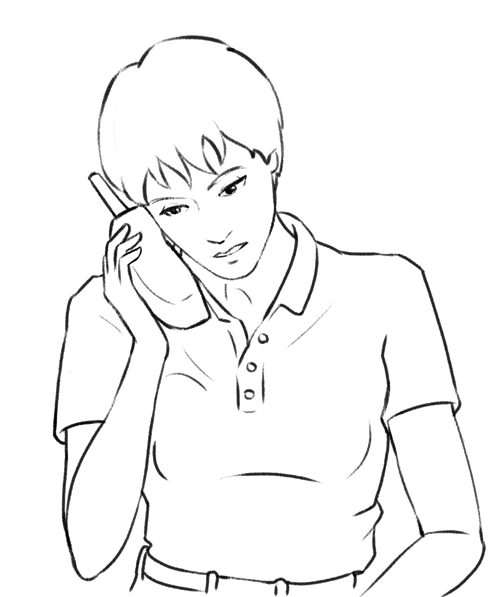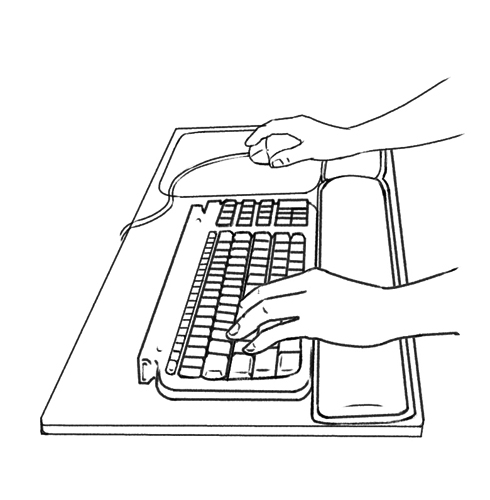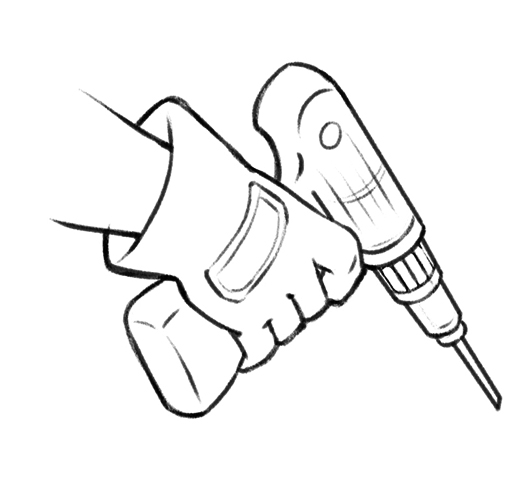Physical Therapy in Merced & Atwater for Work Activities
Ergonomics refers to fitting an external environment to a person’s needs. Applying ergonomic principles in a work environment helps reduce the risk of workplace injuries. Ergonomics also boosts efficiency and productivity by reducing discomfort.
The main goal of ergonomics is to reduce the incidence of soft tissue injuries and musculoskeletal disorders that may be caused by sudden force, repetitive motions, workplace vibration, awkward posture, and sustained manual handling.
To create an ergonomic work environment, risk factors must first be identified, and then reduced or eliminated through improved work space setup, displays, tools, controls, equipment, and lighting. Each modification should accommodate the person’s physical capabilities at the workplace as well as the individual’s limitations.
WORK-RELATED TASKS
Some common ergonomic risk factors associated with work-related tasks include:
- Awkward postures.
- Prolonged positions.
- Repetitive movements.
- Excessive force.
- Contact stress.
- Vibration.
- Environmental conditions such as heat, cold, loud noise and poor visibility.
- Vibration.
 Awkward postures:
Awkward postures:
Awkward postures refer to body positions that are uncomfortable or put certain body parts at a mechanical disadvantage. Muscles and joints work most efficiently in specific positions—usually at the midpoint of the joint's range of movement. When muscles are put under too much mechanical stress at the same time as they are being stretched, they become more susceptible to injury. Prolonged positions:
Prolonged positions:
Positions held for long periods of time can cause fatigue to supporting muscles. This can lead to discomfort and increase the risk of injury. Certain positions place increased pressure on different body structures, and holding the same position for a long time can cause damage to those structures. A common example of this is the pressure that is exerted on discs in the lower back whenever the trunk of the body is in a flexed position such as driving or sitting in a chair.
 Repetitive movements:
Repetitive movements:
Repetitive movements can lead to the overuse of muscles and tendons. This can subject these structures to microtrauma (e.g., microscopic tears) that cause pain. Performing repetitive movements in an awkward position increases the risk of injury. Over time, muscles and tendons may actually begin to rub against other bony structures, causing wear and tear of soft tissue. Contact Stress:
Contact Stress:
Contact stress occurs when pressure is exerted on a joint. For example, when kneeling on the floor for an extended period, there is contact stress on the knees. Contact stress can cause irritation and inflammation in the body, particularly when combined with awkward postures.
Environmental conditions:
Muscles fatigue faster in hot conditions, and gripping objects or tools can become difficult to maintain with sweaty palms. Alternating between tasks—or taking frequent breaks from the task— may be required when working in hot weather or confined spaces.
In cold conditions, blood flow to the extremities decreases, and this leads to reduced muscle performance. Wearing appropriate clothing and warming up the working muscles through light exercise or stretching before commencing work duties may minimize the impact of cold weather.
Loud noise is another environmental condition that can require sustained attention to a task and create tension within the body. Poor visibility may also lead to impaired hand-eye coordination during a task, or cause an individual to hold the body in an awkward position while straining to see properly.
 Vibration:
Vibration:
When a work-related task involves vibration—such as driving a forklift—the blood supply to vibrating areas of the body decreases. This issue hinders proper muscle contraction and leads to more rapid fatigue.
Whole-body vibration is typically experienced by operators of heavy machinery or utility vehicles. Furthermore, hand-arm vibration occurs in workers who use impact tools or those which vibrate such as rattle guns, drills, or hammers.
How to Reduce Ergonomic Risk Associated with the Task. (Heirarchy of Control):
- Eliminate the task.
This is the most effective way to reduce ergonomic risk, but is usually the most difficult, and may not always be an option. For example, repairing a heavy piece of machinery—such as a pump or engine—on site rather than removing it from the device for repair eliminates the task of having to move heavy pieces of machinery.
- Substitute the task.
Find an alternative way to meet the same goal. For example, use a trolley to transport boxes from A to B, instead of carrying the boxes by hand.
- Modify the task.
This includes changing tools or equipment, breaking up the task so that it is shared by more than one person, or completing the task through shorter bursts of activity. When possible, interchange the strenuous task with a more moderate activity.
- Personal protective equipment.
This is the least effective method of managing ergonomic risk. It includes the use of knee pads and gloves to absorb pressure, shock, and vibration, thus reducing the impact on the body.
THE INDIVIDUAL
Some common ergonomic risk factors associated with the individual include:
- Acquired postural changes:
Over time, the body can develop poor posture from repeated tasks, even in an ergonomic environment. Without paying close attention to posture, these issues can lead to muscle strain, nerve compression, soft tissue injury, or permanent tissue damage.
- Restricted range of motion:
If joints don't have full range of motion due to degenerative changes or a previous injury, the surface of the joint may be subjected to an increased or abnormal load. Muscles and tendons surrounding the affected joints may also be at risk of overuse or injury due to altered biomechanics.
- Inadequate cardiovascular fitness:
Cardiovascular endurance is essential for many physical jobs. Without proper fitness, the individual will experience fatigue quickly and be unable to complete job duties.
- Inadequate physical strength:
If an individual does not possess enough strength to complete job tasks such as lifting, carrying, pushing, pulling, or using tools, the individual will be at risk of experiencing a physical injury.
- Physical disabilities:
Individuals with permanent physical disabilities such as altered visual acuity or hearing, an amputation, a spinal cord injury, or physical trauma may have an increased risk of overuse in affected tissues due to altered perception, biomechanics, or strength.
How to Reduce Ergonomic Risk Associated with the Individual.
Maintaining physical health and good posture is essential for preventing injury. A Functional Abilities Evaluation (FAE) can assess an individual's physical ability to perform tasks associated with a job.
How Yosemite Physical Therapy can help:
At Yosemite Physical Therapy, we can help reduce your ergonomic risk factors by analyzing the postures and movements that you normally use during your work activities. We will also analyze your body as well as your ability to perform required tasks.
Our Physical Therapists can conduct a Functional Abilities Evaluation (FAE) to assess your physical ability to meet the demands of your job. We may identify risks within your job such as awkward postures or improper equipment setup, and make suggestions for improvement. We may also discuss your typical work day and provide guidance for avoiding injury or assist with the recovery of an existing injury.
In addition, we may recommend scheduled breaks throughout your work day or alternative tasks that prevent you from remaining in a sustained position for prolonged periods of time. Finally, we will offer to design an individualized program that consists of stretches you can do at your workplace to reduce muscle tension caused by work activities.
